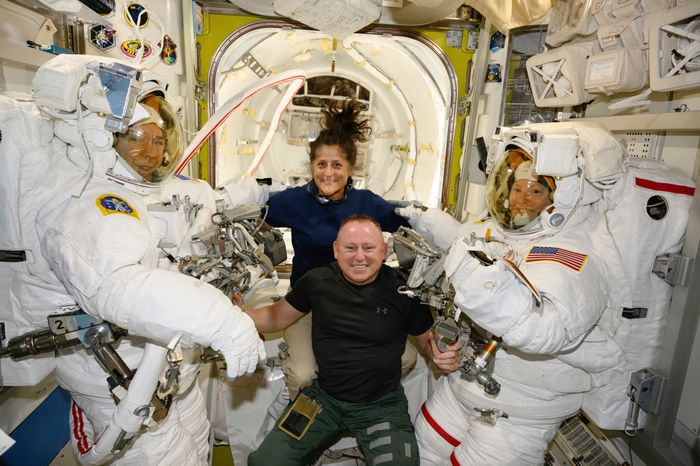Two NASA astronauts may be stuck on the space station until February
Two NASA astronauts may be stuck on the space station until February

Boeing’s Starliner spacecraft had so many problems during its first crewed launch to the International Space Station that NASA officials aren’t sure whether it will be able to bring its crew back home as planned
NASA astronauts Butch Wilmore and Sunita Williams may be stuck on the International Space Station (ISS) until February 2025 after issues cropped up with the spacecraft they rode to the station. This was the first crewed test flight of that capsule, Boeing’s Starliner, and it is not yet clear whether it will be safe for Wilmore and Williams to use it to get home.
Starliner launched on 5 June, with the intention of spending about a week docked to the ISS before shuttling the astronauts back to Earth. The launch had been delayed by a myriad of small problems with the spacecraft, and even on the day of lift-off the craft experienced minor helium leaks that engineers decided were not enough of a problem for another delay.
But by the time it reached the ISS, more helium leaks had sprung and five of Starliner’s 28 thrusters had failed. Wilmore and Williams boarded the ISS safely – but it is now a month beyond their planned return to Earth, and the next move is uncertain.
“When we started this mission, it was a test mission,” said Ken Bowersox at NASA during a 7 August press conference. “We knew that it potentially had a higher risk than a flight on a vehicle that has more experience.” Now, he says there are disagreements within NASA as to whether the risk of more leaks and thruster failure during a return flight is too high to put people back on board Starliner.
A major part of assessing that risk has been attempting to recreate the issues that Starliner has seen in space with tests on the ground, said NASA’s Steve Stich during the press conference. He said there has been some progress, but not yet enough to significantly lower the uncertainty in how Starliner will perform on its way back to Earth. “We can’t totally prove with certainty [that] what we’re seeing on orbit is exactly what we’re seeing on the ground,” said Stich.

















